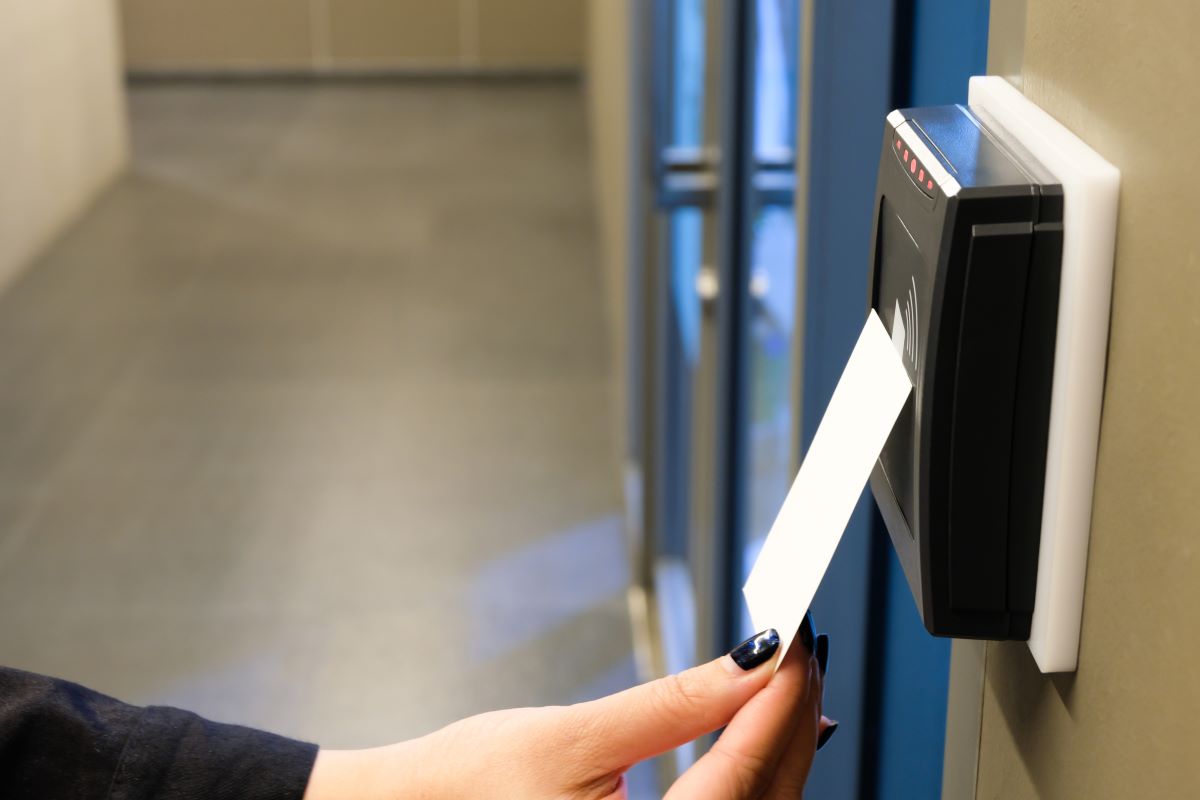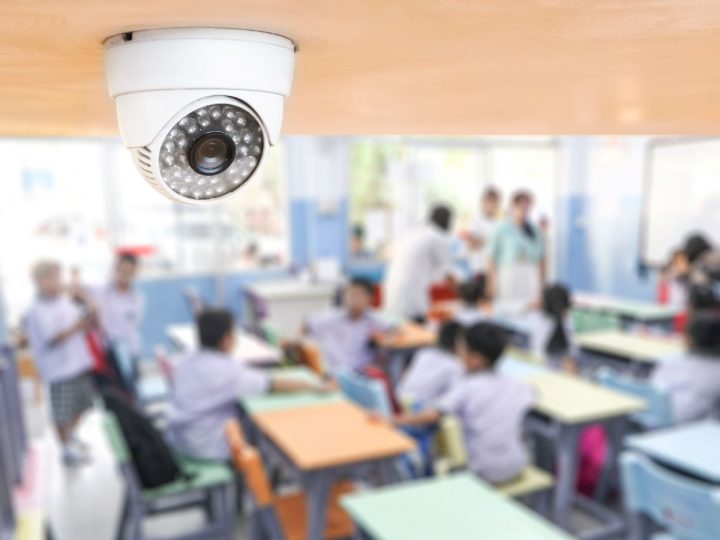This SEICO blog post provides you with highlights
from the in-depth PELCO blog:
(HOW TO CHOOSE THE BEST COMMERCIAL SECURITY SYSTEM FOR YOUR BUSINESS OR OFFICE)

More and more, security is a priority for commercial property owners. With rising crime, building owners know attracting/retaining tenants means providing safe, secure environments. Plus, owners are under pressure from insurance companies and regulators to maximize security to protect building occupants and their property. That requires the best commercial security system (not necessarily the most expensive system), but a commercial security system that meets specific requirements of the property, now and in the future.
Understanding the different types of commercial security systems for a business or office includes knowing the importance of developing an integrated commercial security system that includes alarm and other security components by working with a specialist building security company. Specialists like SEICO offer surveillance system design, installation, and support. SEICO carries all major brands of CCTV – Digital Video Surveillance Systems, including PELCO®. Surveillance can solve many of your business problems.
Why are commercial security systems so important?
Large office buildings typically have multiple companies as tenants, each with significant numbers of employees and visitors. Commercial security systems must provide convenient, controlled access for permanent and temporary occupants, while preventing intruders from gaining access.
Building security teams need to monitor all areas to detect incidents/issues, such as smoke or fire that threaten safety. Along with a network of office alarm systems and sensors, office building live surveillance is an essential building block of commercial property security since real-time surveillance ensures security teams have full visibility of activity throughout the property and can respond rapidly to incidents.
Security components like access control and parking lot security cameras outside commercial properties are also important. Office buildings with a parking lot reserved for employees and visitors typically include security gates and access control systems to ensure only authorized vehicles enter. Plus, both indoor and outdoor security cameras reduce the risk of theft or damage to parked vehicles.
Commercial campuses with separate buildings require perimeter security – an important element of a security system for commercial properties. Together with surveillance systems and sensors, perimeter access control systems manage access and maintain awareness of threats to the site.
Property owners and their tenants recognize that they must also reduce the risk of cybersecurity threats. Because the cost of losing commercial data or intellectual property is high, cybersecurity must be an integral element of a commercial security system.
What are the various commercial security system components?
Comprehensive security systems for commercial properties incorporate access control systems, security cameras – also known as CCTV (closed-circuit television) cameras, sensors, detectors, commercial alarm systems and cybersecurity systems. Each of these components can operate as standalone systems, but the best commercial security systems work together to form integrated solutions.
Commercial access control systems
Modern access control systems replace the old way of securing buildings with locks and keys, which are expensive to maintain since keys are continuously issued, recalled, or replaced. Also, lock and key systems offer minimal security since keys can be stolen or shared with no way to identify who was in the building.
Today’s access control systems are electronic solutions that allow authorized users and visitors to request access by several different methods. Access control systems manage access to building entrances with security teams managing entrances to specific departments, employee-only spaces such as on-site gyms or restaurants, or restricted areas. Elevator access control is another security barrier to commercial building floors.
Authorized users, generally employees, present credentials such as key cards or key fobs to a reader located at entrances. The latest systems allow users to present credentials using an app downloaded to their cellphone/other mobile device, while biometric credentials, such as fingerprints/iris scans, are increasingly popular for convenient, secure identification. This centralized security solution has users’ credentials transmitted over a secure network to a validation database. If user recognized, software sends door release signal to an electronic door lock, allowing user to enter. Visitors, including delivery drivers, can request access by speaking to the front desk or their contact via an audio or video intercom. They can also present guest passes to the access control reader if an employee has provided one.
Commercial live video surveillance cameras
CCTV cameras are used for office building live security monitoring. Often used in vulnerable spaces like elevators or parking garages, video security identifies suspicious activity or in high-traffic areas monitors overcrowding risk.
Commercial live video surveillance transmits continuous feeds to a recorder on premise or to the cloud. Security teams can review and analyze images and respond to unusual activity, plus the images are stored for future analysis as part of an audit or to provide evidence in the event of an incident.
As modern CCTV industry trends progress, live video security cameras are now capable of high-definition images to help security professionals identify subjects accurately. Security teams can use advanced video analytics or artificial intelligence tools to improve the interpretation of the video feeds and strengthen office building security surveillance.
Commercial alarm systems for buildings
Commercial alarm systems help protect occupants against internal and external threats and hazards. For example, commercial alarm systems for intrusion detection fitted to doors and windows alert security teams to possible break-ins or doors/windows left open, posing a security risk.
Employee safety is of utmost importance. Business security alarm systems include motion sensors located in vulnerable areas to alert security teams or emergency services of suspicious activity. For safety of all building occupants, all commercial buildings should have a security system that integrates fire alarms, smoke alarms and sensors, and burglar alarms. These integrated alarm systems should be installed by professional commercial alarm specialists.
Environmental sensors monitor air-based and sensory changes such as levels of carbon monoxide, humidity or particle pollution within the workplace. This helps maintain a healthy work environment for employees and reduces risk of workplace absence through illness.
Cybersecurity systems for businesses
Cybersecurity is an integral element of office building security systems. Designed to protect digital assets such as computers and networks against attacks that could lead to the loss of critical data or disruption of key operations. Physical security and cybersecurity have traditionally been seen as different roles, but the lines are increasingly blurred with the rise of interconnected systems, and many businesses are adopting converged security strategies. A physical and cybersecurity convergence strategy protects network devices, applications and software linked to those assets. It also ensures both physical and cyber security teams are aware of potential threats by sharing security data and harmonizing cover.
Commercial security system infrastructure
When designing a commercial security system, a critical consideration is on-premise vs. cloud security, or whether the infrastructure for capturing and storing data from security cameras or access control systems should be retained on-site or hosted in the cloud. This varies depending on the needs of your business management.
On-premise solutions require infrastructure in the building.
Servers or digital video recorders, software to manage infrastructure and a network to connect infrastructure with security or access control system components. The size and number of servers or recorders are determined by the number of feeds from individual security components, and this solution also generates energy requirements to power the storage devices and any associated cooling systems.
A cloud security system requires no physical infrastructure on the premises.
Storage and management systems are housed in the cloud and, depending on the subscription, without a limit to the number of individual security feeds that can be stored. Storage does not require an internal network – because data is transmitted directly from the security source to the cloud via the Internet, it can be reviewed on an on-premise monitor or other remote or mobile devices.
Integrations for your commercial security system is key.
Businesses are under increasing threat. 39 percent of respondents (2022 Thales Data Threat Report) reported a security breach in the previous 12 months and 44 percent reported an increase in volume, severity or scope of attacks. The strongest commercial security systems integrate all components to provide security professionals with a single view of all building activity based on live data.
Smart locks – Provide data on movements within an area and provide higher levels of protection for restricted areas. Security teams restrict access to authorized users and detect unauthorized entry to respond to physical threats. Data from access control systems allows teams to identify unusual patterns of behavior, enabling proactive response to potential threats. Integration enables security teams to make greater use of data such as integrating access control systems with security video cameras for data that can help security professionals identify suspects.
Access control – Protecting business data is critical since a wealth of valuable information lies in these security systems. Access control systems provide security teams with comprehensive data on access to campuses, buildings, restricted areas and infrastructure.
Visitor management and occupancy tracking – Access systems provide valuable data for visitor management, delivery management and capacity management systems, enabling security teams to monitor and control movement within a building. Vital in the event of a serious problem is when security teams need to be aware of the total number of people on-site, such as a fire or other safety threat. With integration, business fire alarms and smoke alarms, for example, can be integrated with access control systems to automate lockdowns or restrict access.
Video security – CCTV cameras (like pan-tilt-zoom cameras) are important components of office building surveillance security. Integrating CCTV cameras with motion sensors and commercial alarms for intrusion detection increases situational awareness so cameras respond faster to notifications from sensors and alarms. Artificial intelligence and machine learning tools can be integrated with cameras to improve recognition and notification of threats.
Smart integrations for commercial security systems means.
Commercial security system integration has wider benefits as property managers adopt smart building technologies, integrated into an intelligent building management system. Smart building technologies enable teams to monitor and automate control of environmental factors for workplace quality. Smart lighting solutions use sensors to turn lights on or off in line with occupancy, while smart HVAC adjusts temperatures in line with occupancy levels and weather forecasts. Smart solutions reduce costs, improve energy efficiency, and minimize human monitoring.
The right commercial security systems for your building or office.
There is no one-size-fits-all solution for a commercial security system. The right system is the one that provides the highest level of security without feeling intrusive or sacrificing convenience. It should integrate all security components so that security teams have a consistent, single view of all activity within a building and offer flexibility for future growth.
SEICO has 200+ years of accumulated experience in design, planning, installation and maintenance of integrated security systems. Providing services throughout Illinois, Iowa, Missouri, Indiana, Wisconsin and beyond, SEICO provides high-quality security systems with unique personalization, custom design & engineering that keeps them a customer favorite.





